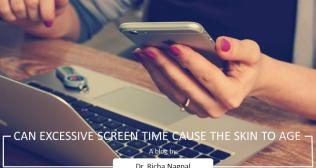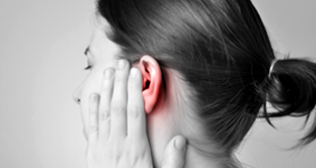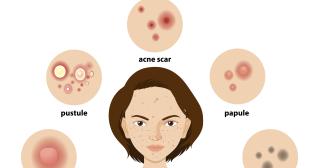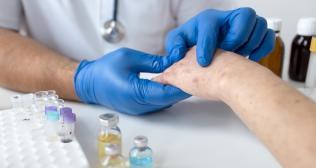
Hand, Foot ,and Mouth Disease: Cause, Symptoms, and Treatment
Introduction
Parents never desire to see their child in pain, whether it’s as mild as a runny nose or a slight cough or severe symptoms like difficulty breathing, nausea, or a high fever. Moms and dads are constantly working hard to ease their children’s discomfort.
Most of us also try to keep seasonal infections and COVID-19 at bay by teaching and practicing good hygiene practices. Have you heard about Hand-Foot-and-Mouth Disease (HFMD)? Let’s dive deep to understand this disease better.
What is Hand-Foot-and-Mouth Disease (HFMD)?
Hand-foot-and-mouth disease (HFMD) is a viral illness that causes sores in an individual’s mouth and a rash, usually on the limbs, that often comprises small, white blisters or red bumps. It is known to be caused by coxsackievirus and can be quite inconvenient and unpleasant.
Causes and Transmission of HFMD
Human enteroviruses and coxsackievirus A16 predominantly cause HFMD.
Children below the age of 10 are most often impacted. However, teens and adults can sometimes catch the infection, too. HFMD generally develops in the summer and early fall.
The virus spreads via tiny air droplets that are released when an infected individual coughs, sneezes or blows their nose. Anyone can catch HFMD if:
- An infected individual sneezes, coughs, or blows their nose near you
- An individual touches their nose, eyes, or mouth after touching something contaminated by the virus, such as a toy or a doorknob.
- An individual touches their stools or fluid from the blisters of an infected individual.
The virus most easily spreads in the first week an individual has contracted the disease.
Recognizing the Symptoms of HFMD
The time between virus transmission and the beginning of symptoms is generally 3 to 7 days.
These symptoms comprise:
Fever and Flu
Children often experience a rise in temperature and other fever and flu-like manifestations 3 to 5 days after they are infected with the virus. These can comprise:
- Eating or drinking less
- Discomfort, pain, dryness, or throat irritation
- Not Feeling well
Mouth Sores
These sores usually begin as tiny red spots, mostly on the tongue and insides of the mouth, that blister and can become painful.
Look for signs that indicate swallowing might be painful for your child:
- Not drinking or eating
- Unintentional saliva flows out from the mouth.
- Only desiring to drink cold fluids.
Skin Rash
It appears on the palms of the hands and soles of the feet and, in some instances, on the buttocks, legs, and arms.
The rash is normally not itchy and appears as flat or slightly raised red spots, sometimes with blisters that have a portion of redness at their base. The blisters might contain a fluid harboring the virus.
However, more critical symptoms such as encephalitis, meningitis, and polio-like paralysis may occur too.
Decoding the Treatment of HFMD
There is no fixed treatment for the infection other than symptom relief. Antibiotics are not effective in these cases. Antibiotics treat bacterial infections, not viral infections. To relieve the symptoms, the following home remedies can be used:
- Over-the-counter medicines such as acetaminophen (Tylenol) or ibuprofen (Advil and Motrin) can treat fever. However, aspirin should not be given to children under the age of 18 suffering from viral infections.
- Saltwater mouth gargles (6 grams of salt to 1 glass of warm water) might be relieving.
- Drink enough fluids. The best fluids are cold milk products. Avoid drinking juice or soda because their acid content causes burning pain in the ulcers.
Unraveling the Outlook of HFMD
The prognosis for the majority of patients with HFMD is excellent. Most patients recover within a few weeks without any after-effects of the disease. Acute illness generally lasts 10 to 14 days, and the infection uncommonly recurs or persists. However, certain patients with hand, foot, and mouth disease might develop serious complications.
Possible Complications
- Loss of body fluids
- Seizures due to high fever
- Pancreatitis
Don’t Hesitate to Consult a Healthcare Professional
Contact a healthcare provider if you experience complications, such as pain in the neck, arms, or legs. Emergency symptoms comprise convulsions.
An individual should also contact a healthcare provider if:
- Medication does not lower a high fever
- Dehydration signs appear, such as dry skin and mucus membranes, weight loss, irritability, decreased alertness, and reduced or dark urine.
Steps to Prevent HFMD
- Maintaining high personal and environmental hygiene standards helps reduce HFMD-causing virus transmission.
- Parents should inform their child’s school, kindergarten, or childcare center at the earliest if their child is suffering from HFMD so they can monitor other children closely and take extra precautions.
- Parents should also ensure that their infected children stay at home and away from public places.
- Check if the child no longer displays manifestations of HFMD, and if applicable, the medical certificate issued by the healthcare professional has expired before resuming school.
- The children should wash their hands with soap at regular intervals, such as prior to eating and after using the toilet.
- Infected individuals should protect their nose and mouth with a tissue while coughing or sneezing and dispose of the tissue as soon as possible.
- Avoid sharing food/drinks or eating vessels, toothbrushes, or towels with others.
- Parents should also make sure that articles such as toys or appliances contaminated by secretions from the nose and mouth are cleaned and disinfected before they are used again.
- The parents should also be recommended to keep the child away from immunosuppressed individuals due to the potential risk of transmitting a serious illness.
While HFMD is generally a mild illness, complications can occur in unusual cases. Seek medical attention if the individual develops severe symptoms, such as difficulty in breathing, dehydration, or inability to swallow fluids.
Popular Searches
Hospitals: Cancer Hospital in Delhi | Best Heart Hospital in Delhi | Hospital in Amritsar | Hospital in Ludhiana | Hospitals in Mohali | Hospital in Faridabad | Hospitals in Gurgaon | Best Hospital in Jaipur | Hospitals in Greater Noida | Hospitals in Noida | Best Kidney Hospital in Kolkata | Best Hospital in Kolkata | Hospitals in Rajajinagar Bangalore | Hospitals in Richmond Road Bangalore | Hospitals in Nagarbhavi Bangalore | Hospital in Kalyan West | Hospitals in Mulund |
Doctors: Dr. Rana Patir | Dr. Rajesh Benny | Dr. Rahul Bhargava | Dr. Jayant Arora | Dr. Anoop Misra | Dr. Manu Tiwari | Dr. Praveer Agarwal | Dr. Arup Ratan Dutta | Dr. Meenakshi Ahuja | Dr. Anoop Jhurani | Dr. Shivaji Basu | Dr. Subhash Jangid | Dr. Atul Mathur | Dr. Gurinder Bedi | Dr. Monika Wadhawan | Dr. Debasis Datta | Dr. Shrinivas Narayan | Dr. Praveen Gupta | Dr. Nitin Jha | Dr. Raghu Nagaraj
Specialities: Heart Lung Transplant | Orthopedic |


















